The FR2 battery is currently out of stock worldwide, our recommendation to you is that you place an order and claim your place on a back order list otherwise you will continually be at the back of the queue. We regret this situation which is due to a shortage of components and beyond our control.
Category: Ambulance
Courier Issues
Most if not all courier services are experiencing delays at present over which we and our colleagues have no control.
In most cases our parcels within the UK are delivered next day however we do see some parcels held up for an extra 24 hours. There is nothing we can do control this and most of our competitors have reacted to this by rightly cancelling their timed deliveries.
We no longer use Evri for deliveries as they can often takes months to deliver if they don’t actually lose the parcel entirely. It may however persuade you not to entrust your parcels to us with them as we can’t be held responsible for the loss, and neither it seems is Evri !
If you are sending a parcel into us and you would find it easier we can arrange collection at cost and your risk if that makes it easier for you.
Hopefully the situation will get better as the holidays fade away although it doesn’t seem to be entirely the fault of Father Christmas.
Cardiac Arrest Survivor Speaks Out
Buying Guide for a used Lifepak or Zoll Monitor / Defibrillator

You have probably seen a Lifepak 12 or Zoll M series advertised on online auction sites and thought it might be nice to have one, and it’s so cheap, well let’s take you through the pitfalls that you might come across.
Firstly we are not trying to put you off the purchase, if you have decided you need the facilities that either of these defibrillator/monitors can offer you then you’ve made a good choice but let’s face it, these units are like Rolls Royce Cars. They are the best around in their day but they are now used units and can be very expensive to repair if they go wrong. Don’t forget you will also need to have them serviced every year to comply with the demands of CQC for example. All this can be costly if you’ve not budgeted for it.
Let’s start by looking at the features available:
AED: a great option to have, nearly all the used units available now in the UK come with fittings for using disposable Defib pads and having the option of AED asw ell just adds to the number of potential users who can easily and quickly be taught to use the machine. So if possible buy one with the AED option.
Pacing: some were sold to the ambulance services at the time but rarely used, its probable you will hardly ever get the chance to use pacing but on the other hand it doesn’t add anything to the value of the machine so if you’ve got it great, don’t let it be a deal-breaker if it’s not on the one you’ve seen.
12 Lead ECG: Probably the real reason you have a Lifepak 12 or Zoll in your sights. Make sure the Lifepak 12 also has the 100mm printer it came with and it hasn’t been swapped for the 50mm option or you’ll be looking at a bill of several hundred pounds to upgrade. Do you have the right cables to go with the 12-lead option?
Biphasic Waveform: The Biphasic waveform was introduced by the industry back in the 1990’s and is much more effective than monophasic. That doesn’t mean monophasic doesn’t work any longer but the value of your future purchase has just dropped by a considerable margin so be aware. Do you know how to tell the difference between the two versions and can you be sure of what you are led to believe?
Which one have you got?
Pulse Oximetry: is a popular option, remember you can purchase a small fingertip pulse oximeter for around £50 but its nicer to have it integrated into your new monitor and most Zoll and Lifepaks come with as an option. Make sure you have the sensor as these can be £150 to replace.
Non-Invasive Blood Pressure: Probably something you will use quite a bit. It will add value and cost to the monitor you are buying and although very popular on new LP12’s I’m not sure it was as popular on the Zoll. That means you may not always find it available. Does it matter, well it’s nice to have a printed record of the patients BP but you can buy a digital BP monitor now for as low as £15 !! Your call.
Carry Case: Sometimes they are included and if in good condition well worth having but many are a bit battered; after all, they are there to protect the machine. It is nigh on impossible to find new cases these days.
Cables, Sensors and Batteries: are these included in the deal, quite often they are not. To re-equip a Lifepak 12 with these items could easily cost you £1000 if you have to buy new ones.
Don’t forget to budget for an additional battery charger with the Lifepak 12, you’ll need one unless you have a support system already.
Age: A popular question is one regarding the age of the used unit, this is irrelevant since it may be 10 years old and have been barely used in a rural station, it could be five years old and been used in the city centre. Even if it has been used in the city centre many parts may have been replaced during its life. We are never provided with operational history. Be guided by the general condition but its easy to change the outer case if you know-how.
Used machines will always have a potentially shorter life than new equipment but with the price of a new Defib/monitor now approaching £17000 I guess for many of you there is little option.
You can cross your fingers and buy from an auction site where after-sales support is likely to be non-existent or you can buy from Wessex Medical.
I worked for Physio-Control for nearly 20 years and my engineer for around 15 years. We have been heavily involved in the LP12 since before it was launched.
We believe the units we sell are amongst the best on the market, they are not the cheapest but you have the knowledge we look after our customers and more importantly, we can support you before and after your purchase.
We carry a range of accessories and can service your Lifepak or Zoll at a reasonable charge.
Why not call us with your requirements on 01722 410084
Alan Caulfield
Ambulance Stolen in Deeside
A 25-year-old man has been arrested after the theft of an ambulance.
The emergency vehicle was stolen while the crew were treating a patient in a house on Green Lane in Deeside, Flintshire, on 14 November.
It was later found abandoned and damaged a short distance away in Dee View Crescent and had to be taken out of service.
A North Wales Police spokesman said: “The arrested man, from Connah’s Quay, has been released under investigation.”
The Welsh Ambulance Service NHS Trust (WAST) said at the time it “could have led to very serious harm” if the patient had urgently needed to go to the hospital.
Be Aware on the Road When an Emergency Vehicle Approaches
A good driver will always be aware of his surroundings and give himself plenty of time to react correctly.
Coronavirus – Myth Busters
WHO Advice on the wearing of masks
Advice on Wearing Masks – WHO
Advice on Wearing Masks – WHO
Advice on Wearing Masks – WHO
When should you wash your hands?
You should wash your hands:
- after using the toilet or changing a nappy
- before and after handling raw foods like meat and vegetables
- before eating or handling food
- after blowing your nose, sneezing or coughing
- before and after treating a cut or wound
- after touching animals, including pets, their food and after cleaning their cages
Washing your hands properly removes dirt, viruses and bacteria to stop them spreading to other people and objects, which can spread illnesses such as food poisoning, flu or diarrhoea.
It can help stop people picking up infections and spreading them to others.
It can also help stop spreading infections when you’re visiting someone in hospital or another healthcare setting.
FDA authorizes industrial respirators for use during coronavirus

N95 respirator (Image from the FDA)
The FDA has authorized the use of certain industrial respirator masks for healthcare workers during the coronoavirus outbreak.
The N95 disposable filtering facepiece respirators have been approved by the National Institute for Occupational Safety and Health (NIOSH) as non-powered air-purifying particulate respirators. Healthcare workers will be allowed to use these, including those that have passed the manufacturers’ recommended shelf-life, to prevent exposure to the novel coronavirus, which causes COVID-19.
The FDA has allowed emergency-use non-cleared devices during previous health emergencies, including the Zika virus outbreak in 2016, the enterovirus outbreak in 2015 and the ebola virus outbreak in 2014.
Manufacturers and government-designated “strategic stockpilers” of the respirators included in this emergency authorization must notify the FDA of adverse events related to their use, according to a letter from CDC director Dr. Robert Redfield.
More information is available here.
Wiltshire Air Ambulance receives AOC and resumes flying
Wiltshire Air Ambulance are delighted to announce they have received their own Air Operator Certificate (AOC) and will return to Helicopter Emergency Medical Service (HEMS) immediately.
Our charity is now just one of four air ambulances who hold their own Air Operator Certificate.
We are delighted to announce we have received our Air Operator Certificate (AOC) and will return to Helicopter Emergency Medical Service (HEMS) immediately.
Our charity is now just one of four air ambulances who hold their own Air Operator Certificate.
Chief executive David Philpott says: “This has been a hard slog and has taken a lot longer than we anticipated – and a lot longer than it really should have.
“I would like to thank everyone who has worked tirelessly for the charity to get the AOC; they have all gone the extra mile.
“Our trustees have provided rock solid support throughout the process. Equally the backing from our Ambassadors and local MPs has been very welcome.
“Our pilots, paramedics and charity staff deserve immense credit for their work during this challenging period, along with our dedicated volunteers who are out supporting the charity at events come rain or shine.
“Importantly we are now able to return to what we are here to do, providing helicopter emergency medical services for the people of Wiltshire and surrounding areas.”
Our Bell 429 helicopter is available to be called to incidents immediately.
Donate your silver for the Air Ambulance anniversary
A wide range of silver-themed donations are being sought by the Lincs & Notts Air Ambulance, which will help support the life-saving service as part of their 25th Anniversary celebrations.
The local Air Ambulance has recently launched its brand-new ‘Donate Your Silver’ fundraising initiative, which asks members of the public to donate their silver items throughout the Charity’s silver anniversary year.
Anyone who would like to Donate Your Silver to the Lincs & Notts Air Ambulance and support this new initiative, you can request your very own supporter pack by emailing fundraising@ambucopter.org.uk/
When to call 999
At some point, most people will either witness or be involved in an accident or experience a medical emergency.
Knowing what to do next and who to call can potentially save lives.
Life-threatening emergencies
Call 999 in a medical emergency. This is when someone is seriously ill or injured and their life is at risk.
Medical emergencies can include:
loss of consciousness
an acute confused state
fits that aren’t stopping
chest pain
breathing difficulties
severe bleeding that can’t be stopped
severe allergic reactions
severe burns or scalds
Call 999 immediately if you or someone else is having a heart attack or stroke. Every second counts with these conditions.
Also call 999 if you think someone has had a major trauma, such as after a serious road traffic accident, a stabbing, a shooting, a fall from a height, or a serious head injury.
What happens when I call 999?
If it’s a genuine emergency, where someone is seriously ill or injured and their life is at risk, call 999 and don’t panic.
You can contact emergency services via SMS if you’re deaf, hearing impaired or have a speech impediment.
Visit the emergencySMS website for more information or to register your phone.
1. Answer the questions
Once you’re connected to a call handler, you’ll have to answer a series of questions to establish what’s wrong, such as:
Where are you (including the area or postcode)?
What phone number are you calling from?
What has happened?
This will allow the operator to determine the most appropriate response as quickly as possible.
Dialling 999 doesn’t necessarily mean an ambulance will be dispatched. The call handler will decide what’s appropriate.
It may be safe enough for you to be seen elsewhere, or you can be given telephone advice by a medically trained clinical adviser.
An ambulance will be sent if it’s a life-threatening emergency.
Response units that could be dispatched include:
an emergency ambulance
a rapid response vehicle or motorbike
a cycle response unit
a community first responder
a combination of the above
2. Don’t hang up yet
Wait for a response from the ambulance control room. They might have further questions for you, such as:
What’s the age, gender and medical history of the patient?
Is the person awake or conscious and breathing?
Is there any serious bleeding or chest pain?
What is the injury and how did it happen?
The person handling your call will let you know when they have all the information they need.
You might also be given instructions about how to give first aid until the ambulance arrives.
How you can assist the ambulance crew
There are a number of things you can do to assist the ambulance service.
For example, stay calm and:
if you’re in the street, stay with the patient until help arrives
call the ambulance service back if the patient’s condition changes
call the ambulance service back if your location changes
if you’re calling from home or work, ask someone to open the door and direct the paramedics to where they’re needed
lock away family pets
if you can, write down the patient’s GP details and collect any medication they’re taking
if you can, tell the paramedics about any allergies the patient has
If appropriate, you may want to call the patient’s GP. The GP may meet you at the A&E department, or call with important information about the patient.
London Ambulance Service appoints trauma surgeon and GP to its board
London Ambulance Service has announced the appointment of two prominent London clinicians to its Trust board as non-executive directors.
Professor Karim Brohi and Dr Mark Spencer take up their posts on 1 March.
Prof Brohi has worked as a consultant in trauma and vascular surgery at Barts Health NHS Trust since 2006 and is the clinical lead for pre-hospital care. Since 2014, he has been the clinical director of the London major trauma system, incorporating four specialist trauma centres, and the care of over 15,000 patients a year.
Dr Spencer worked as a GP in Ealing for 28 years before becoming a GP associate working for Bullingdon Prison in Buckinghamshire last year. He is a clinical quality expert who brings 30 years’ experience working as a GP in London and the surrounding areas.
Are AED’s Safe
The following comment regarding the safety of AED defibrillators comes from the Resuscitation Council. A UK body of medical professional tasked along with international colleagues of investigating and improving resuscitation protocols.
“Modern AEDs are very reliable and will not allow a shock to be given unless it is needed. They are extremely unlikely to do any harm to a person who has collapsed in suspected SCA. They are safe to use and present minimal risk to the rescuer. These features make them suitable for use by members of the public with modest (or even no training), and for use in Public Access Defibrillation schemes.”
If anybody still has any doubts call in for a chat, I started selling AED’s in 1987, when medical professionals were just being introduced to the concept of a machine doing the work for them.
FREQUENTLY ASKED QUESTIONS ABOUT AUTOMATED EXTERNAL DEFIBRILLATORS (AEDs)

What is an automated external defibrillator (AED)?
Unlike the models of defibrillators intended for use by healthcare professionals (and the ones seen most often on TV), automated external defibrillators (AEDs) are designed to allow minimally trained laypersons to respond to cardiac emergencies, particularly sudden cardiac arrest (SCA). AEDs are about the size of a portable laptop computer and provide a brief, but powerful, electrical stimulation to the chest, interrupting the abnormal rhythm and helping to restore the heart’s natural rhythm. The devices are pre-programmed with the expertise needed to analyze the heart’s electrical function. They also use voice prompts and screen displays to instruct the user on how to operate the device.
Who can use an AED?
Police, firefighters, security officers, athletic trainers, flight attendants and lifeguards in the U.S. and around the world are currently using AEDs. The devices are designed to be used by anyone even those who have not had any prior training. It is considered more effective to try than to do nothing.
How safe are AEDs?
AEDs are very accurate and will not deliver therapy to someone who is not in cardiac arrest. When used properly and with appropriate precautions, AEDs are very simple to operate and pose no risk to either the rescuer or the patient.
Is sudden cardiac arrest the same as a heart attack?
No. A heart attack occurs when a blood vessel feeding the heart itself is blocked by plaque or a blood clot. The longer the blood flow is interrupted, the more extensive the damage done. The majority of heart attack victims survive the first attack. Treatment for heart attack includes angioplasty — using a tiny balloon to widen blocked blood vessels — and “clot-busting” drugs known as thrombolytics.
Sudden cardiac arrest involves problems with the heart’s electrical system, which can cause it to stop beating entirely. When that happens, blood flow to the rest of the body is interrupted and the victim passes out. Defibrillation is the only known treatment for this condition, and AEDs are the quickest and most efficient way to reach individuals with this life-saving therapy.
Haven’t AEDs been in the news recently?
Yes. Two studies reported in the October 2000 issue of the New England Journal of Medicine show that persons with minimal training can successfully use simple, portable defibrillation devices in public places to save lives that might otherwise be lost. Also, the Cardiac Arrest Survival Act, the nation’s first legislation recognizing the life-saving role played by AEDs, now requires the Secretary of Health and Human Services to develop recommendations and guidelines for AED placement and use in federal buildings nationwide and in post offices and other buildings housing federal agencies. (US Only)
Accurate Blood Pressure Measurement: Why Do Monitors Read High?

Accurate Blood Pressure Measurements 3
Accurate Blood Pressure Measurement:
Why Do Monitors Read High?
This paper is taken from the American Diagnostic website who are one of our key suppliers of blood pressure monitors. Click on the link to download the paper.
What is a Heart Attack ?
The term “Heart Attack” isn’t used in medicine. It has no specific meaning
We are here to treat a cardiac arrest. That is when the heart stops circulating blood around the body
The cause may be one of four different heart arrhythmia’s
Pulseless Electrical Activity
Asystole
Ventricular Tachycardia
Ventricular Fibrillation
We are only interested in the last two only when using a defibrillator
Defibrillation is the delivery of an electrical shock to the heart
It “stuns” the heart and hopefully allows it to restart in the correct sequence
Defibrillation is the only treatment for VF/VT
It must be delivered within a few minutes
So…….Why Do I Need To Buy a Defibrillator

Why do I need to buy an AED
it may be your life the AED saves…………………

An AED or automatic external defibrillator is a medical device designed and recommended the use by almost anyone. Its function is to deliver a powerful electric shock to the heart of somebody who has collapsed. It is the only treatment for somebody in this condition and speed is of the essence. No doubt you’ve seen a similar defibrillator being used many times on television programmes.
To date, the British government have purchased and installed around 10000 AED’s across the country with the aim of getting a defibrillator to a victim within 3 minutes. Around 300,000 people a year die from sudden cardiac death, often with no previous history and no warning. You will find them already installed in airports, railway stations, police cars, homes, shops and pubs factories and offices.
The biggest concern anybody has when they consider whether to purchase an AED is whether they can do any harm. The simple answer is no. AED’s are designed to be instinctively easy-to-use and will only operate if the patient is in one of two potentially fatal cardiac arrhythmias. Every other medical condition from a simple faint to something more serious will not allow the device to deliver a shock.
So, every minute that is wasted in delivering a shock to a patient in cardiac arrest their chances of survival deteriorate by at least 10% so if you think you can get to the patient before an ambulance does, you’ve answered the question of whether you need to buy an AED.
The AED shown here is incredibly instinctively easy-to-use. It has a long life no maintenance battery and checks itself daily. The AED will guide you through what to do using voice and visual commands. All you need to do when you find the patient in a collapsed state is attach two self-adhesive electrodes to their chest, switch the machine on and listen.
Using a defibrillator does not mean that you don’t need an ambulance, you still need medical support but you are giving the patient the greatest possible chance of survival and the paramedic the greatest chance of delivering that patient to the hospital alive.
AED’s have dropped dramatically in price over the last twenty years and the leading defibs are now available at a little over GBP800. A small price to pay for peace of mind and an even smaller price to pay for saving someone’s life.
Courses are available to teach you CPR and AED use should you require this. There is an additional cost for this in most cases but it is an extensive course for your staff.
What is an AED ?
An AED or automated external defibrillator is a medical device designed and recommended for use by almost anyone without any previous training, although familiarisation does help.
Its function is to deliver a powerful electric shock to the heart of somebody who has collapsed. It is the only treatment for somebody in this condition and speed is of the essence. No doubt you’ve seen a similar defibrillator being used many times on television programmes. It can save a life.
To date, the British government and others have purchased and installed around 10000 or more AED’s across the country with the aim of getting a defibrillator to a victim within 3 minutes. Around 60,000 people a year die from sudden cardiac death, often with no previous history and no warning. You will find them already installed in airports, railway stations, police cars, homes, shops and pubs factories and offices.
I started to sell defibrillators exactly 30 years almost to the day, in those days customers were sceptical of the technology and the prices were around £2700
New Chief Executive joins London Ambulance Service
New Chief Executive joins London Ambulance Service
London Ambulance Service’s new Chief Executive, Garrett Emmerson, takes up his role on the 30th May 2017
Garrett said he is “proud and honoured” to be appointed as Chief Executive and says it is “an exciting time to join the Service”.
Setting out his immediate priorities over the next few weeks, Garrett said: “The quality of our patient care is already good and we will continue deliver excellent health care to Londoners in the face of increasing demand.
“I want to build on progress already made in the last two years and help set the Service’s longer term vision and strategy.”
On his first day in the Service, Garrett met ambulance crews, motorbike and cycle responders as well as control room staff and those supporting frontline operations in the back office.
Garrett, who was previously Transport For London’s Chief Operating Officer for Surface Transport, says he is proud to work in “one of the greatest cities in the world”.
Police, fire and ambulance crews share Abertillery station
Police fire and ambulance services are working under one roof for the first time in the Gwent Police force area.
Abertillery fire station is now an “emergency services station” with ambulance crew, firefighters, police and community support officers (PCSOs).
Gwent Police and Crime Commissioner (PCC) Jeff Cuthbert said it would cut costs and give an “enhanced service”.
The first meeting between staff from the three services focused on reducing grass fires and arson in the area.
Station commander Mark Kift said collaboration with PCSOs was already making a difference with two long-standing issues.
“We’ve got a big issue in Abertillery with bin fires. They’re often put out but the fire service hasn’t necessarily been called to the scene,” he said.
“We can use our data and data from the police to compile a view of what we need to do and target our resources – the fire crime unit, more patrols.”
He said double parking on narrow valleys streets was also a problem and a hazard for fire engine crews.
“The police use their resource to move them for us for access of the fire appliances which wouldn’t happen if they weren’t here and that’s a massive thing for us.”
Insp Sarah Greening, who covers Blaenau Gwent, said the change had “massively cut out the bureaucratic process” when contacting other services or arranging meetings.
Abertillery police station closed several years ago due to budget cuts but the newly named facility features a police inquiry desk open to the public on Thursdays and Fridays.
Patsy Roseblade, deputy chief executive at the Welsh Ambulance Services NHS Trust, said the new agreement would benefit communities as well as achieving “operational efficiencies”.
It is believed the only other similar arrangement is in Queensferry, Flintshire, where the three services have been working from the same building.
Ambulance services ‘not coping’ as demand rises
Ambulance crews are finding it “increasingly difficult to cope”, an audit of the service in England says.
The warning by the National Audit Office comes just two months after a BBC investigation highlighted increasing delays answering 999 calls.
The NAO said rising demand, recruitment problems and wider NHS pressures meant crews were failing to hit targets.
It comes as NHS bosses are looking at relaxing the eight-minute target for calls where it may not be necessary.
In November the BBC revealed ambulances were increasingly being delayed outside A&E units as hospital staff were too busy to take on the patients being brought in.
And the investigation found just one of the 13 services in the UK was meeting its key target – the eight-minute goal to reach the most life-threatening cases.
This NAO review just looked at performance in England. It too highlighted these problems and urged NHS bosses to review what was happening.
It pointed to the discrepancy between the rise in demand – 30% over four years – compared to the rise in budget – 16% over the same period.
NAO head Amyas Morse said action was needed as ambulances were a “vital” part of the service.
Christina McAnea, of Unison, which represents ambulance staff, said: “There’s simply not enough money to cope.”
NHS England said steps were being taken. Ambulances have been given longer to assess calls before a response needs to be sent – about a quarter of crews are called back before they reach the scene because call handlers have to make quick decisions about who needs an emergency response.
Three ambulance services – South Western, Yorkshire and West Midlands – are piloting a scheme which is seeing some urgent calls, such as strokes and fits, re-categorised as not needing an eight-minute response. Evidence suggests such quick responses are not necessary in these cases.
Prof Keith Willett, of NHS England, said: “These trials are designed to makes sure ambulances focus on the right priority – getting to the most urgent patients in the quickest possible time and improving the service to all patients who dial 999.”
Vasofix Safety IV Cannula

Vasofix Safety IV Cannula
Vasofix® Safety IV Cannula
The Vasofix safety IV cannula from B. Braun offers more security thanks to a safety clip. This safety mechanism cannot be bi-passed; thus reducing the risk of needle stick injuries. The safety IV cannula has an injection port that allows a quick transfer of drugs without needing to re-puncture.
The Vasofix Safety IV Cannula requires only a low level of user experience and offers excellent protection from needle stick injuries, due to its immediate securing of the needle tip upon exit. The Vasofix Safety can be ordered in varying sizes through the Wessex Medical web site.
IV catheter with injection port and passive fully automatic needlestick protection
Description
Vasofix® Safety – Shielded IV catheter with injection port
Passive fully automatic protection against needlestick injuries and related infection
IV catheter material available in Polyurethane (PUR)and FEP
Sharp Universal Bevel for wide choice in insertion angles and minimal puncture trauma
Double Flashback Technology provides confirmation of successful catheter placement through quick visualization of both needle and catheter flashback
Latex-free, PVC-free, DEHP-free
Acc. ISO-Standard 10.555-1/5
Properties
Fully automatic passive Safety Shield which protects the needle tip to prevent needlestick injuries. No user activation required – no button, twists or clicks
Safety Shield automatically covers needle tip upon needle withdrawal
Safety mechanism cannot be bypassed
Eliminates risk of inadvertent activation during handling
Safety Shield stays in place through disposal
Do You Have a Question about This Product – Ask Wessex
Ambulance staff body-cams ‘to tackle paramedic attacks’
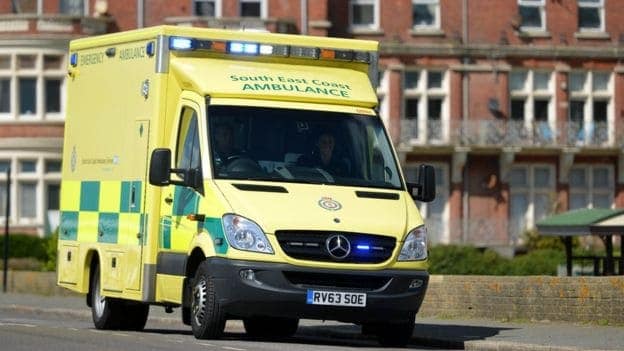
Ambulance staff body-cams ‘to tackle paramedic attacks’
Paramedics could start wearing body cameras in the south east of England as part of efforts to tackle a 46% rise in assaults on them.
South East Coast Ambulance Service (Secamb) trust data showed attacks rose yearly from 98 in 2011-12 to 184 in 2015-16, including a jump from 126 in 2014-15 to 184 last year.
Secamb said several ambulance services were looking at using “body-cams”.
Unison has called for a government-led task force to tackle the problem.
Secamb security manager Adam Graham said current measures included CCTV, risk assessments and conflict resolution training.
He added: “One thing that’s being looked at nationally is additional devices and additional training – so for the devices, body-cams, such as the police have, [are] being considered.”
The ambulance service, which released its figures under a Freedom of Information Act request, can also take sanctions ranging from warnings to prosecutions over violence and aggression, he said.
In 2015-16, Secamb submitted 44 sanctions.
Paramedic Gemma Fitzgerald was assaulted while trying to help a lady who was collapsed in the street.
“When we got there, she was lying in the road and we knew that she was quite agitated, screaming and shouting at passers-by,” said Ms Fitzgerald.
“She became really verbally abusive, so we backed off and made sure the road was safe with the ambulance and called police.
“But whilst we were waiting for them, she actually started to attack a friend. She also started to hurt herself.
“As we stepped in, she sort of caught my eye, and that was it. I became the target of her aggression.
“[She was] very verbally abusive, lashing out, and actually managed to – I was kneeling down next to her – kick up and kick me in the face, knocking me off my feet.
“The police arrived and pretty much arrested her straight away. I went to hospital and found I had a broken jaw.”
When several services met last year for a presentation by Kent Police on body-cams, one of the features was the quality of evidence, Mr Graham added.
West Midlands Ambulance Service is also looking at body-cams – a spokesman said the trust was looking at costs but “nowhere near piloting it”.
But Bea Adi, from Unison, said: “It’s not just about things like CCTV, it’s about educating people to let them know the impact that these incidents have on people who are working to protect them.
“Unison itself is calling for the government to set up a special task force that looks at ways of keeping people safer in their roles.”
NHS Protect said it undertook research into assaults in the ambulance sector, including aggravating factors such as likelihood of injury, times incidents were most prevalent and the demographics of the perpetrator.
It said it was working to provide guidance for the future and the protection of NHS staff.
In a sample of 2,479 incidents between 2010 to 2015, NHS Protect found 1,184 had one or more aggravating factors and of those 22.1% were attributed to illegal drugs and 72.2% to alcohol.
V Festival: More than 1,200 treated by ambulance staff at Weston Park

More than 1,200 people were treated by ambulance staff at this year’s V Festival at Weston Park – with 40 having to be taken to hospital.
A total of 1,218 patients were treated, a slight increase on last year.
West Midlands Ambulance Service and St John Ambulance provided medical cover which included a medical centre staffed by doctors and nurses, as well as a command and control centre which co-ordinated the responses of ambulances and other medical staff stationed across the site to patients in need of medical assistance.
West Midlands Ambulance Service spokeswoman Claire Brown saied: “The wet weather didn’t let up much throughout the weekend for revellers and consequently played a part, with many injuring themselves after slips, trips and falls.
“A number of patients were also treated for the effects of too much alcohol and people with a flare up of pre-existing medical conditions were also seen.”
Steve Wheaton, Assistant Chief Ambulance Officer, added: “With tens of thousands of people all in one place, we’re always prepared for the unexpected as it’s inevitable that people will fall ill and require our help.
“The team of staff and volunteers have worked extremely hard to ensure every patient received the very best care. A special thank you to the day staff that remained onsite after their shift had ended last night to lend an extra pair of hands during a particularly busy period in the medical centre.
Be the first to comment
“As a trust, we’ve provided medical cover at V Festival for several years now and are proud when months of planning culminate into a smooth and successful operation.
“Thank you to St John Ambulance and all of our staff for their hard work throughout the weekend which ensured it was another safe festival. We’ll remain on site all day today, until the last of the campers have left.”
Statement regarding Patient Transport Service contract for Surrey

Statement regarding Patient Transport Service contract for Surrey
10 August 2016
Please attribute to a South East Coast Ambulance Service NHS Foundation Trust (SECAmb) spokesperson:
“South East Coast Ambulance Service NHS Foundation Trust (SECAmb) is disappointed that its bid to continue to provide the Patient Transport Service across Surrey beyond April 2017 was unsuccessful.
“The Trust ensured its bid would allow it to build on its current service delivery and provide a high quality and responsive service.
“This news sadly sees the end of SECAmb providing PTS in its region after a long and proud history. We would like to pay tribute to the dedication and commitment of our PTS staff across Surrey and thank them for their continued professionalism.
“Staff directly affected will be contacted to discuss next steps and how the process will work moving forward. We will be also working closely with trade unions, local commissioners and with the future provider South Central Ambulance Service in the coming months.”
Bookmark and Share













Tell Us What You Think!